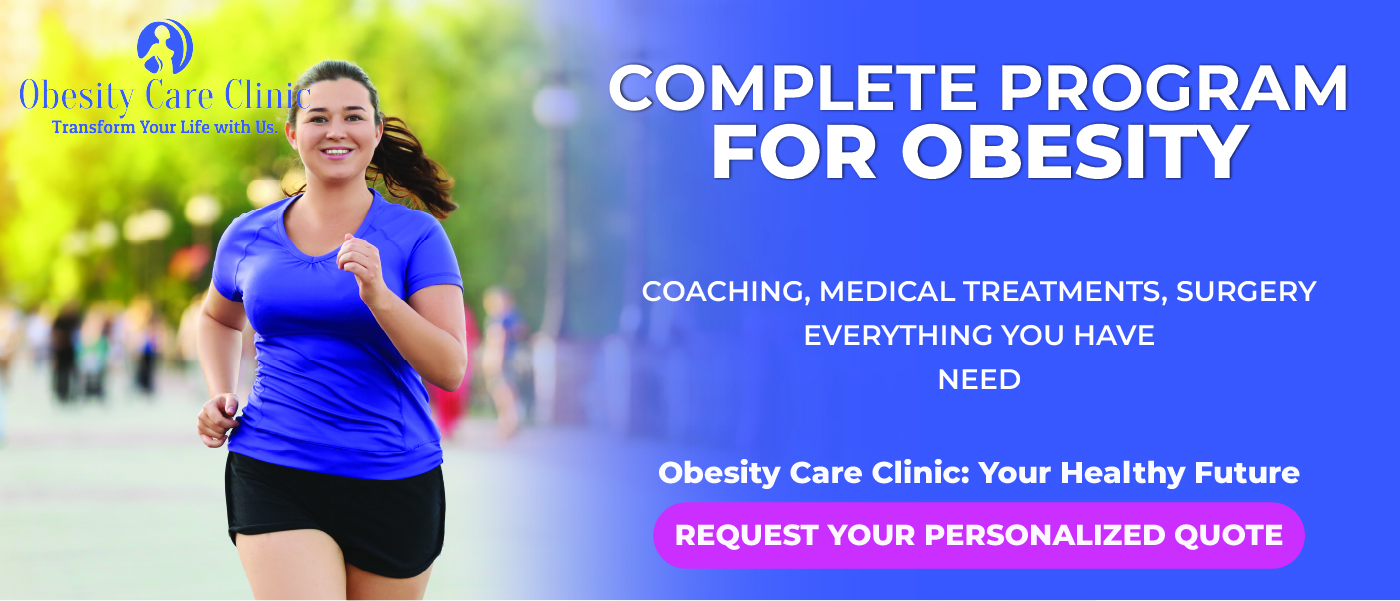Introduction
Obesity, a burgeoning global health concern, has marked its presence in every corner of the world, affecting both the young and old alike [1]. This alarming rise in obesity rates has catalysed the need for efficient, diverse, and personalised weight loss solutions. Today, from diet regimens to surgical procedures, individuals have a plethora of choices to embark upon their weight loss journey.
Two such methods that stand out in their contrast are the gastric balloon procedure and traditional dieting. The gastric balloon, a non-surgical intervention, involves the insertion of a saline-filled silicone balloon into the stomach, thereby limiting food intake and promoting feelings of satiety [2]. On the other hand, traditional diets are vast and varied, ranging from the Mediterranean approach, praised for its cardiovascular benefits [3], to the ketogenic diet, noted for rapid fat loss [4].
But which strategy offers the most sustainable weight loss results? And more importantly, which option aligns with individual needs, preferences, and lifestyles? This article delves deep into the pros and cons of the gastric balloon procedure and traditional diets, aiming to provide readers with a comprehensive understanding to make informed decisions. While the answer may not be one-size-fits-all, equipped with knowledge, one can embark on a path that offers both health and happiness [5].
Understanding Gastric Balloon Procedure
What is a gastric balloon?
A gastric balloon, also known as an intragastric balloon, is a temporary medical device made of soft silicone. It’s introduced into the stomach through a non-surgical endoscopic procedure. Once inside, it’s inflated with saline, which allows it to occupy space in the stomach. By doing so, the balloon promotes early satiety, reducing food intake and subsequent weight loss [6]. Typically, the balloon remains in the stomach for about six months, after which it is deflated and removed [7].
Non-surgical nature
Unlike other bariatric surgeries, the gastric balloon is non-invasive, eliminating the risks and recovery time associated with surgical procedures [8].
Temporary and reversible
The balloon can be removed at any time, offering a reversible solution for those not ready for a permanent change [7].
Significant weight loss
Studies have shown that patients can achieve an average of 10-15% total body weight loss with the gastric balloon, which is substantial considering its non-surgical nature [9].
Potential side effects
Some patients might experience nausea, vomiting, or abdominal discomfort after the balloon insertion, although these symptoms usually resolve within a few days [10].
May not address underlying eating behaviours
While the balloon can be an effective tool for weight loss, it doesn’t inherently change eating habits. Comprehensive lifestyle and dietary counselling are essential for long-term success [10].
Traditional Diets Explored
What is meant by “traditional diets”?
Traditional diets refer to dietary patterns that have stood the test of time and often have cultural or regional roots. Unlike fad diets that come and go, traditional diets have been embedded in societies and passed down through generations. Examples include the Mediterranean diet, rooted in the eating habits of people from countries bordering the Mediterranean Sea, and the ketogenic diet, which, although popularised recently, has its origins in therapeutic nutritional strategies from the early 20th century [11].
Pros of traditional diets
Tailored to individual preferences and needs
Given the wide variety of traditional diets, individuals can choose one that best suits their tastes, lifestyles, and health needs. For instance, someone with a preference for plant-based foods might gravitate towards the Mediterranean diet due to its emphasis on fruits, vegetables, and grains [12].
Address and change long-term eating habits
Traditional diets often promote balanced and holistic eating habits, emphasising whole foods over processed ones. The sustained nature of these diets can foster lifelong healthy eating habits [13].
Cost-effective and accessible
Since traditional diets focus on natural and whole foods, they often exclude expensive supplements and proprietary products. This makes them more affordable and easier to adopt [14].
Cons of traditional diets
Potential for yo-yo dieting
While traditional diets are balanced, not every diet suits every individual. Incompatible diets can lead to cyclical weight gain and loss, impacting overall health [15].
Not all diets are nutritionally balanced
While many traditional diets are wholesome, others might lack certain nutrients or be too restrictive, necessitating careful research and possible supplementation [15].
Considerations for Making a Choice
Individual health needs
Choosing between a gastric balloon procedure and traditional diets requires a thorough evaluation of one’s unique health profile.
Co-existing medical conditions
Certain medical conditions, such as type 2 diabetes or cardiovascular diseases, might benefit more from specific interventions. For instance, the Mediterranean diet has shown potential in improving heart health and glycemic control [16]. On the other hand, those with severe obesity may find quicker initial weight loss with the gastric balloon, which could alleviate weight-related health issues [17].
Previous weight loss attempts
One’s history with weight loss can offer insights into which approach might be more effective. Those who have tried multiple diets without sustained success might consider a more intensive intervention like the gastric balloon [18].
Lifestyle and preferences
Willingness to undergo a procedure vs. lifestyle changes
Individuals need to gauge their comfort level with medical procedures. While some may see the gastric balloon as a straightforward, temporary intervention, others might prefer the natural route of adjusting their diet and lifestyle [19].
Support systems and accessibility to resources
Dietary changes often require ongoing support, from access to certain foods to moral encouragement from loved ones. A solid support system can significantly influence the success of a chosen weight loss method [20].
Financial implications
Cost of the gastric balloon procedure and associated medical visits
The gastric balloon, being a medical procedure, involves costs not only for the device but also for consultations, follow-ups, and possible post-procedure treatments [17].
Potential expenses tied to diet plans, supplements, or foods
While traditional diets can be more cost-effective in general, some may involve purchasing organic foods, supplements, or specialised meal plans [20].
Conclusion
The journey to weight loss is deeply personal, and influenced by myriad factors, including health status, lifestyle, preferences, and financial considerations. Whether one leans towards the innovative gastric balloon procedure or opts for time-tested traditional diets, making a well-informed decision is imperative [21].
Each approach offers its unique advantages: while the gastric balloon provides a non-surgical, temporary solution, traditional diets emphasise holistic and sustainable eating habits [22]. Yet, regardless of the chosen path, the importance of consulting with healthcare professionals must be considered. They can offer tailored advice, taking into account an individual’s health history and unique needs [23]. Ultimately, achieving lasting weight loss is not just about shedding pounds but also adopting a holistic perspective that prioritises physical and mental well-being [24].
With the right knowledge and support, individuals can embark on a journey that harmonises their health aspirations with their life’s realities, leading to both a fulfilling and healthy existence [25].
References
- World Health Organization. (2020). Obesity and overweight. https://www.who.int/news-room/fact-sheets/detail/obesity-and-overweight
- Abu Dayyeh, B. K., Kumar, N., Edmundowicz, S. A., Jonnalagadda, S., & Larsen, M. (2015). ASGE Bariatric Endoscopy Task Force systematic review and meta-analysis assessing the ASGE PIVI thresholds for adopting endoscopic bariatric therapies. Gastrointestinal Endoscopy, 82(3), 425-438.e5.
- Estruch, R., Ros, E., Salas-Salvadó, J., et al. (2013). Primary Prevention of Cardiovascular Disease with a Mediterranean Diet. New England Journal of Medicine, 368(14), 1279-1290.
- Paoli, A. (2014). Ketogenic diet for obesity: friend or foe?. International journal of environmental research and public health, 11(2), 2092-2107.
- Mann, T., Tomiyama, A. J., Westling, E., Lew, A. M., Samuels, B., & Chatman, J. (2007). Medicare’s search for effective obesity treatments: diets are not the answer. American Psychologist, 62(3), 220.
- Genco, A., López-Nava, G., Wahlen, C., Maselli, R., Cipriano, M., Sanchez, M. M., … & Busetto, L. (2013). Multi-centre European experience with intragastric balloon in overweight populations: 13 years of experience. Obesity surgery, 23(4), 515-521.
- Nikolic, M., Boban, M., Ljubicic, N., Supanc, V., Mirosevic, G., & Pezo Nikolic, B. (2017). Short-term effects of the intragastric balloon on plasma ghrelin, leptin, and adiponectin levels in morbidly obese patients. Obesity surgery, 27(9), 2410-2418.
- Ponce, J., Quebbemann, B. B., & Patterson, E. J. (2013). Prospective, randomized, multicenter study evaluating safety and efficacy of intragastric dual-balloon in obesity. Surgery for Obesity and Related Diseases, 9(2), 290-295.
- Machytka, E., Gaur, S., Chuttani, R., & Bojkova, M. (2017). Recent advances in endoscopic bariatric therapies. Gastroenterology Report, 5(4), 255-267.
- Genco, A., Bruni, T., Doldi, S. B., Forestieri, P., Marino, M., Busetto, L., … & Pecchioli, L. (2005). BioEnterics intragastric balloon: the Italian experience with 2,515 patients. Obesity surgery, 15(8), 1161-1164. https://pubmed.ncbi.nlm.nih.gov/16197790/
- Kossoff, E. H., & Wang, H. S. (2013). Dietary therapies for epilepsy. Biomed J, 36(1), 2-8.
- Willett, W. C., Sacks, F., Trichopoulou, A., Drescher, G., Ferro-Luzzi, A., Helsing, E., & Trichopoulos, D. (1995). Mediterranean diet pyramid: a cultural model for healthy eating. The American journal of clinical nutrition, 61(6), 1402S-1406S.
- Drewnowski, A., & Almiron-Roig, E. (2010). Human perceptions and preferences for fat-rich foods. In Montmayeur JP, le Coutre J (Eds.), Fat Detection: Taste, Texture, and Post Ingestive Effects. CRC Press/Taylor & Francis.
- Rao, M., Afshin, A., Singh, G., & Mozaffarian, D. (2013). Do healthier foods and diet patterns cost more than less healthy options? A systematic review and meta-analysis. BMJ open, 3(12), e004277.
- Farrow, C. V., Haycraft, E., & Blissett, J. M. (2015). Teaching our children when to eat: how parental feeding practices inform the development of emotional eating—a longitudinal experimental design. The American journal of clinical nutrition, 101(5), 908-913. https://pubmed.ncbi.nlm.nih.gov/25787999/
- Esposito, K., Maiorino, M. I., Ceriello, A., & Giugliano, D. (2010). Prevention and control of type 2 diabetes by Mediterranean diet: a systematic review. Diabetes research and clinical practice, 89(2), 97-102.
- Mathus-Vliegen, E. M. (2014). Intragastric balloon treatment for obesity: review of recent studies. Advances in therapy, 31(8), 834-845.
- Khera, R., Murad, M. H., Chandar, A. K., Dulai, P. S., Wang, Z., Prokop, L. J., … & Singh, S. (2016). Association of pharmacological treatments for obesity with weight loss and adverse events: a systematic review and meta-analysis. JAMA, 315(22), 2424-2434.
- Thomas, J. G., Bond, D. S., Phelan, S., Hill, J. O., & Wing, R. R. (2014). Weight-loss maintenance for 10 years in the National Weight Control Registry. American journal of preventive medicine, 46(1), 17-23.
- Monsivais, P., Aggarwal, A., & Drewnowski, A. (2011). Are socio-economic disparities in diet quality explained by diet cost?. Journal of Epidemiology & Community Health, 65(6), 530-535. https://pubmed.ncbi.nlm.nih.gov/21148819/
- Swinburn, B. A., Caterson, I., Seidell, J. C., & James, W. P. (2004). Diet, nutrition and the prevention of excess weight gain and obesity. Public health nutrition, 7(1a), 123-146.
- Strychar, I. (2006). Diet in the management of weight loss. CMAJ: Canadian Medical Association Journal, 174(1), 56-63.
- Dansinger, M. L., Tatsioni, A., Wong, J. B., Chung, M., & Balk, E. M. (2007). Meta-analysis: the effect of dietary counseling for weight loss. Annals of internal medicine, 147(1), 41-50.
- Teixeira, P. J., Going, S. B., Houtkooper, L. B., Cussler, E. C., Metcalfe, L. L., Blew, R. M., … & Lohman, T. G. (2004). Pretreatment predictors of attrition and successful weight management in women. International journal of obesity, 28(9), 1124-1133.
- Fabricatore, A. N., Wadden, T. A., Higginbotham, A. J., Faulconbridge, L. F., Nguyen, A. M., Heymsfield, S. B., & Faith, M. S. (2011). Intentional weight loss and changes in symptoms of depression: a systematic review and meta-analysis. International Journal of Obesity, 35(11), 1363-1376. https://pubmed.ncbi.nlm.nih.gov/21343903/




